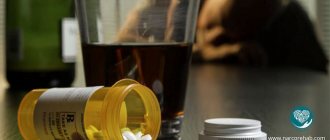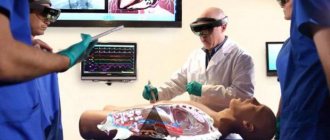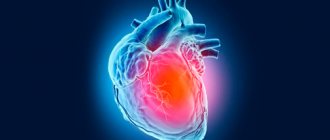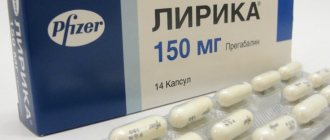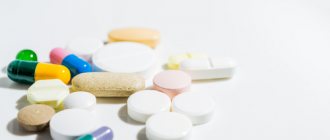- General information
- Historical facts
- Effect on the body
- How to recognize a drug addict
- Tests for Phenazepam
- How long does it stay in the body?
- How long do drug addicts live?
- Analogs
- How to speed up elimination at home
- Detoxification in hospital
- Perdose
- How to recognize and what to do
- Rehabilitation
- Coding
- Why you can’t undergo rehabilitation at home or on an outpatient basis
- Resocialization and work with codependents
- How to quit on your own
Attention! Drug use causes irreparable harm to health and poses a danger to life!
General information
The drug phenazepam is a typical tranquilizer. It is used to normalize sleep, combat anxiety, and relieve convulsive syndrome in epilepsy. Fenozepam is available in injection form or in tablets. All central effects of the drug are achieved through stimulation of benzodiazepine receptors.
The effect of the drug extends to the reticular formation, nonspecific centers of the thalamus and the amygdala complex. The muscle relaxant effect is based on the ability to block spinal reflexes. The tranquilizer is well absorbed through the gastrointestinal tract, after which it is metabolized in the liver and excreted by the kidneys.
Phenazepam is available without a prescription. Doctors sometimes prescribe it to improve sleep, relieve anxiety during performances or in extreme situations. The first aid kit always contains Phenazepam in injection form to relieve seizures in epilepsy or damage to the central nervous system.
All drugs from the benzoidazepine group cause sleep lasting up to 6-8 hours. But the longer the sleep, the stronger the drowsiness, fatigue and depression will be during the next day after taking the drug.
Taken from: Pharmacology, tenth edition by D.A. Kharkevich
The drug is not considered a drug, but addiction can develop from it. In addition, with each subsequent dose, to achieve the desired effect, it is necessary to increase the dose. If you increase the dosage without consulting a doctor, this will lead to acute drug poisoning with possible death.
Release form of Phenazepam
The drug is available in the form of tablets and injections for intramuscular and intravenous administration.
The drug was recognized as dangerous and began to be sold by prescription only recently, so it can still be found in home medicine cabinets as a remedy for insomnia. For practically healthy people (with anxiety, sleep problems, nervous tension, lower back pain) it is no longer prescribed, choosing drugs with a milder effect. Phenazepam is now used only for severe mental disorders and for the relief of seizures during epileptic seizures.
Historical facts
The drug was invented in the 1970s. The developers who received the state order for the new medicine were the scientific directors of the departments of pharmacology from the Odessa Institute of Physics and Chemistry. After successful research and launch of the drug on the market, the group of voters received the USSR State Prize.
The peak use of the drug came at the end of the 80s, when facts of abuse of barbiturates were published and proven. Phenazepam and its analogues have become alternative drugs with similar effects but fewer adverse reactions.
Effect on the body
After the drug binds to benzodiazepine receptors and the reticular formation, the patient becomes calm and anxiety is eliminated. Then drowsiness appears, smoothly turning into sleep. In addition, the effect of the drug on limbic structures, reflex connections and the thalamus leads to the fact that the drug has the following effects:
- reduces feelings of fear;
- relieves irritability;
- increases emotional lability;
- reduces the manifestation of phobias;
- relieves alcohol and drug withdrawal syndrome;
- relieves muscle spasms;
- prevents nervous tics.
But you should be careful when using Phenazepam. It has a pronounced toxic effect on the liver and heart. If this tranquilizer is abused, the following disorders may occur:
- increased drowsiness, feeling tired;
- nausea and vomiting;
- dizziness;
- fast fatiguability;
- hematopoietic disorders (leukopenia, thrombopenia);
- urinary retention or incontinence;
- epileptic seizures;
- visual impairment;
- depression;
- constipation or diarrhea;
- increased activity of liver enzymes, jaundice;
- dysmenorrhea;
- hallucinations.
To achieve a narcotic effect, Phenazepam is not used in isolation. More often it is combined with other drugs to enhance the result. When the pharmaceutical dose is increased by 2-4 times, the patient's condition becomes the same as with alcohol intoxication or an overdose of barbiturates. But the negative effects and disruption of internal organs are tens of times stronger.
At the moment, benzodiazepanes are the most adequate means to combat insomnia, which is caused by emotional tension, stress, anxiety and worry.
Taken from: Pharmacology, tenth edition by D.A. Kharkevich
Effect of medication in case of overdose
Phenazepam is a drug that, when the dosage is exceeded or used with alcohol and other heavy drugs, causes a pronounced overdose clinic. With a moderate form, a superficial coma occurs, and with a severe overdose, a deep coma occurs. And 10 mg of bromodihydrochlorophenylbenzodiazepine is already deadly for humans.
Also, an overdose of Phenazepam leads to the development of the following symptoms:
- drowsiness and fatigue
- limb tremors
- convulsions
- chills and hot flashes
- slowing down the heart rate
- impaired motor coordination
- loss of orientation in space
- blood pressure surge
- feeling of suffocation and slow breathing
- nausea, vomiting
How to recognize a drug addict
As with any addiction, a drug addict can be in two states: the effects of the drug and the state of withdrawal. In the first case, the patient will be sleepy, lethargic, and answer questions slowly. A person can sleep for a long time. Drug addicts under the influence of Phenazepam react inadequately to external stimuli, they have an increased pain threshold, impaired breathing and a slow heartbeat.
The picture resembles intoxication with alcohol, but there is no smell or bottles of alcohol. But near such a drug addict you can find various packages of medicines and empty packages of pills.
In the case of withdrawal, the opposite is true. The peculiarity of taking tranquilizers is that they cannot be abruptly stopped. If a drug addict runs out of a new dose of medication, he will suffer from insomnia and his general condition will be anxious. Nervous tics will appear, the addict will move into the aggressive phase. When searching for a dose, such a person can deceive those closest to him, sometimes even hit them.
It is difficult to reliably recognize that a person is dependent on tranquilizers. Therefore, the best way to determine drug addiction is testing. Only in this way can you either confirm or eliminate your suspicions.
Signs of using Phenazepam
As with any other addiction, a drug addict using Phenazepam can be recognized by two physical states: intoxication and withdrawal after the drug wears off.
In a state of narcotic intoxication with a tranquilizer, the addict becomes lethargic and severely inhibited, abnormal smoothness and slowness appear in movement, speech and actions. Since the drug is used as a sleeping pill, its large dosages lead to the fact that a person can sleep for a long time and soundly.
Due to an increase in the pain threshold and blocking of receptors indicating a state of drug intoxication, a person almost does not feel pain, does not react to tastes and smells, and is not irritated by very loud sounds and harsh light. Together with the resulting hallucinations, this often leads to death. Accidents often happen to drug addicts on Phenazepam: they “go out” of the window, bleed from cuts without taking any measures, suffocate from the gas being turned on, grab onto electrical wires, etc. A sudden change in mood can lead to suicide attempts.
In general, the state of a drug addict when intoxicated with Phenazepam is extremely dangerous not only for himself, but also for the people around him, especially close relatives living with him.
Find out treatment recommendations without leaving home for free
To select a treatment plan, you just need to leave a request, we will contact you to select the time and specialist you need
Submit your application
Tests for Phenazepam
You can check for the presence of benzodiazepines in the body using a conventional rapid test. The cost of these tests is from 40 to 100 rubles. Urine is tested at home; blood testing is carried out only in laboratories.
Please note that the effect of phenazepam is similar to other narcotic substances, therefore, in parallel with the test for benzodiazepines, a rapid test is carried out using a tablet for 10 drugs. This allows you to quickly check traces of narcotic substances and, if necessary, request laboratory confirmation.
Laboratory confirmation must be done if a person committed an offense under the influence of a drug. The results of rapid tests have no legal force.
To study biomaterials of a drug addict, methods of enzyme immunoassay, gas chromatography-mass spectrometry or gas-liquid spectrometry are used. These methods are written down in the relevant decrees, and can be used in court as a confirmed diagnostic method.
Phenazepam is quickly eliminated from the body through the kidneys, so it is important to know how much time has passed since the last use of the drug.
Please note that there is no specific test for Phenazepam. There is a test for benzodiazepines. If the patient took any drug from the benzodiazepine group (including Phenazepam), the result will be positive.
Tranquilizer Phenazepam - a drug?
In the mid-20th century, Phenazepam was widely used to treat emotional disorders. It has an effect similar to alcohol intoxication - there is lethargy and drowsiness. The free sale of the medicine did its job - it was drunk independently as a sedative, and it was widely used by drug addicts or alcoholics.
Today it is sold by prescription and is used in extremely rare cases. One of these is alcohol withdrawal, accompanied by severe mental disorders. However, more and more drug addicts are abandoning Phenazepam.
The effect of phenazepam and its effect on the body
The addictive effect of these tablets is very strong, so Phenazepam can be safely classified as a narcotic drug. It acts on the nuclei of the thalamus, reduces the conduction of nerve impulses. Consequently, a person’s fear, anxiety, and self-preservation instinct are turned off.
The medicine is absorbed through the gastrointestinal tract, processed in the liver, and then excreted through the urinary system. How to understand that we are dealing with a drug addict taking Phenazepam:
- Unlike other drugs, the drug does not have the effect of stimulating energy production. On the contrary, the person becomes somewhat inhibited.
- The addict is relaxed, he cannot sit upright, but rather reclines on a chair.
- Can talk for hours, while the voice becomes monotonous, there is practically no emotion.
Of course, it is difficult for a non-specialist to identify someone who is addicted to Phenazepam by eye. Moreover, the effect of the pills is similar to intoxication. If a person seems to have drunk, but there is no smell of alcohol, you should sound the alarm.
As the dose and frequency of taking the medication increases, sudden mood swings and deterioration in appearance occur. The pupils often do not react to light. If a person has reached this stage, it will be very difficult for him to get rid of the craving for pills.
Side effects from phenazepam
The list of side effects of the drug is quite impressive:
- Nausea and vomiting.
- Pain in the stomach, the occurrence of gastritis.
- Dry skin and mucous membranes.
- Liver destruction.
- Weakness and fatigue.
- Increased sweating.
- Anemia.
- Temperature increase.
Consequences of taking phenazepam
A lethal dosage of the drug causes death. A less serious consequence of taking the drug is addiction. Taking Phenazepam is especially dangerous for those who have already undergone treatment for drug or alcohol addiction.
Trying to calm down or achieve euphoria, an addict may take a whole handful of the drug without realizing what he is doing. 10 tablets or 20 mg at a time is a dangerous dosage. If the amount of active substance reaches 40, death occurs in 90 percent of cases.
A drug addict on Phenazepam is dangerous not only for himself - in addition to the risk of going out the window or cutting his veins, he can turn on the gas, accidentally set fire to the apartment, etc.
Danger of combination with alcohol
The combination of any drugs with alcohol is extremely dangerous. In addition to increasing the intoxication of the body, alcohol also enhances the effect of the pills. Therefore, the risk of overdose increases.
Contraindications
Phenazepam is strictly prohibited for use by those who have intolerance to the components of the drug, respiratory failure, acute poisoning, or depressive disorders. Pregnant, breastfeeding and people under 18 years of age should also not take Phenazepam.
Phenazepam poisoning
Poisoning with tablets is manifested by the following symptoms:
- Abdominal pain, diarrhea.
- Vomiting, nausea.
- Chills.
- A rise or fall in temperature.
- Cramps.
- Increased pressure.
- Lack of pupillary response to light.
- Coma in severe cases.
If the patient is conscious, it is necessary to give him water in small sips before the specialists arrive. Open the windows, cover with blankets if the person is cold. No medications or decoctions should be given without consulting a doctor.
Withdrawal from phenazepam
Discontinuation of the drug leads to the following phenomena:
- Nervousness, aggressiveness.
- Insomnia.
- Itching all over the body.
- Hallucinations.
- Loss of appetite and wild thirst.
- Pressure surges.
- The occurrence of muscle pain.
- Nausea and vomiting.
The symptoms of withdrawal, overdose or simple pill poisoning are very similar. Therefore, it is important not to self-medicate, but to immediately call doctors.
- Standard
4,500 days.
dropper volume 500 ml
visit of a narcologist
- consultation with a narcologist
- detoxification
- doctor's orders
- medications for 3 days
- monitoring the patient's condition
patient examination*
order service
months
dropper volume 500 ml
- visit of a narcologist
patient examination*
order service
- Popular
Double
5,800 days.
dropper volume 1000 ml
visit of a narcologist
patient examination*
order service
Double
months
dropper volume 1000 ml
- visit of a narcologist
patient examination*
order service
- Intensive
7,500 days.
dropper volume 1500 ml
visit of a narcologist
patient examination*
order service
months
dropper volume 1500 ml
- visit of a narcologist
patient examination*
order service
How long does it stay in the body?
The rate of elimination from the body depends on the ability of the liver to process the components of the drug. On average, tranquilizers are eliminated in 3-5 days. But the exact period depends on both the period of use and the age of the addict.
It is necessary to consider whether it was taken together with other drugs or alcohol. All this slows down the functioning of internal organs and leads to a slower elimination of the drug from the body.
Phenazepam is excreted through the kidneys, so the best method is to test your urine. Metabolites of the drug can be found in urine within 3-4 days. In the blood - 12-18 hours. There are no other data on hair or saliva testing for Phenazepam.
Get help now
Do any of your relatives or friends have an addiction? Have you tried in every possible way to help, but as a result the person still returned to his past life?
You are not the first to encounter this problem, and we can help you.
We guarantee anonymity, we will persuade you to undergo treatment, and we will help you choose a center.
Call us
8
or
Call me
Addiction treatment in Moscow
Treatment of addiction to Phenazepam should be comprehensive. Dependence occurs not only on a physiological, but also on a psychological level. A person forever remembers the feeling of peace after taking the drug, so he strives to repeat it.
Therapy proceeds according to the following scheme:
- Diagnosis and collection of patient history.
- Cleansing the body of drug breakdown products (dropper, hardware techniques).
- Elimination of health problems, removal of physiological cravings for drugs.
- Psychological rehabilitation, work with family members.
Our clinic’s specialists have extensive experience working with even the most severe cases. If you or your loved one is addicted to Phenazepam, call us.
- Service
- Service cost
- Narcologist at home
- from RUR 4,500 order a service
- Coding for alcoholism
- from RUB 5,000 order a service
- Vivitrol coding
- from RUR 26,000 order a service
- Naltrexone coding
- from RUB 35,000 order a service
- Esperal coding
- from RUB 15,000 order a service
- Coding Torpedo
- from RUB 5,500 order a service
- Double block
- from RUR 8,000 order a service
- Classic hypnosis
- from RUB 13,000 order a service
- Ericksonian hypnosis
- from RUR 8,000 order a service
- Tetlong for 3 months
- from RUB 10,500 order a service
- Coding Esperal gel
- from RUB 15,000 order a service
- Narcopsychotherapy session
- from RUB 5,000 order a service
- Doublet - express output and encoding
- from RUB 13,500 order a service
- Hospitalization
- from RUB 5,000 order a service
- Withdrawal from binge drinking in hospital
- from RUR 2,000/day order a service
- Rehabilitation from alcoholism with a guarantee
- from RUB 25,000/month. order a service
- Rehabilitation from drug addiction with a guarantee
- from RUB 25,000/month. order a service
How long do drug addicts live?
Life expectancy with tranquilizer abuse reaches 3-4 years. But the higher the dose and the more often it is taken, the fewer years the addict has to live. In pharmaceutical doses, the drug does not affect internal organs and the nervous system. If you systematically exceed the permissible limit, irreversible changes will occur in the cerebral cortex. Liver cirrhosis with chronic liver failure may develop.
Phenazepam damages the kidneys, causing chronic kidney disease (CKD or kidney failure). When decompensation occurs in the functioning of the kidneys and liver, a person dies, even if assistance is started.
Overdose of phenazepam
A gradual increase in dose inevitably leads to an overdose. Combination with alcohol or other substances only worsens the situation.
What happens if you take 3-5 tablets of phenazepam?
It is impossible to predict the exact effect of the medicine - someone can take five tablets at a time, experiencing only mild intoxication, while another person only needs three to become poisoned. There are cases when alcoholics try to drown out the discomfort of a hangover, without controlling the amount of Phenazepam. Many still consider it a harmless sedative.
Signs of a phenazepam overdose
An overdose can occur when taking a dose higher than indicated in the instructions. The maximum daily amount should not be more than 10 mcg. 40 mcg of Phenazepam may cause death or irreversible effects in the brain.
Signs of exceeding the dose of tablets are vomiting, loss of consciousness, nausea, bluish skin color, lack of pupillary reaction, etc. All that can be done before the specialists arrive is to give the person water in small sips if he is conscious, turn him on his side in case of vomiting, and also open the windows to allow air to enter.
Consequences of an overdose of phenazepam
The consequences of an overdose can be irreversible:
- Cirrhosis of the liver.
- Heart dysfunction.
- Kidney failure.
- Mental disorders.
- The appearance of manic thoughts, suicide.
Analogs
In terms of their effect on the body, barbiturates are analogues of benzodiazepines. They act similarly on the central nervous system and have the same effect on internal organs.
In terms of chemical composition, all drugs from the benzodiazepine group are analogues of Phenazepam, for example:
- Fezanef;
- Phenorelaxan;
- Elzepam;
- Gidazepam;
- Clobazam;
- Lorazepam.
Among drugs, opiates cause similar effects. They also inhibit processes in the central nervous system, but the mechanism for the development of these effects is different.
How to speed up elimination at home
Breeding at home can be hazardous to health. During the rapid release of the drug and its metabolites, rebound syndrome may occur. This means that all inhibitory effects that the drug had will be suppressed by antagonistic mediators. That is, if Phenazepam relaxes the muscles, then if it is abruptly discontinued, cramps may begin. The same applies to sleep and other functions that are affected by tranquilizers.
It is better to limit withdrawal at home to 3-4 procedures and carry it out only in case of an overdose caused by a desire to get drug intoxicated or during a suicide attempt. In other cases, if there are no symptoms of overdose, there is no need to accelerate the elimination of the drug.
Algorithm of actions:
- Rinse the stomach. You can do this by drinking plenty of water, up to two liters of water, and then mechanically induce vomiting (press the root of the tongue with two fingers). This procedure must be repeated 2-3 times. They are effective in the first hour and a half after taking the tablets.
- Take sorbents. It is recommended to take one tablet of activated carbon per 10 kilograms of body weight. You can do more, there will be no harm from the sorbents.
- Drink plenty of fluids to speed up kidney function. This technique is called forced diuresis. Due to heavy drinking, the fluid that is excreted by the kidneys will “pull back” some of the drug metabolites.
If after these procedures lethargy remains and the person is inhibited, you can brew him strong coffee. Caffeine stimulates the nervous system and “unblocks” some of the nerve synapses that inhibit the reaction.
It is better to speed up the elimination of the drug in a hospital setting. Then it is possible to monitor the patient’s general condition and carry out specific therapy with antidotes. In addition, in cases of life-threatening symptoms, emergency medical care can be provided.
Detoxification in hospital
In the hospital, first of all, gastric lavage is performed using a siphon. In this way, you can cleanse the entire stomach without artificially stimulating the vomiting center. After gastric lavage, sorbents (activated carbon, Smecta, white carbon) may be prescribed.
Instead of drinking plenty of fluids in the hospital, infusion therapy with 5% glucose and saline is carried out. This helps remove drug toxins from the liver and kidneys. This way, cleansing occurs faster and symptoms of poisoning or overdose disappear.
The next step is to prescribe specific antidotes to benzodiazepines. These are the following:
- Mesocarb;
- Flumazenil.
Both drugs must be calculated correctly. If the dosage is incorrect, it can only make things worse.
If possible, in a hospital or special rehabilitation clinics, the blood is purified using an “artificial kidney” device, and the patient is sent for hemodialysis. All methods are based on hardware blood purification; they are relevant for detoxification. Although there is evidence that in case of an overdose of Phenazepam, hemodialysis is ineffective.
It has been established that among all drugs from the benzoidazepine group, Phenazepam is one of the best anxiolytics.
Taken from the scientific article: “The effectiveness of phenazepam as part of complex therapy in patients with anxiety-depressive syndromes.” Authors: M.E. Statsenko, O.E. Sporova, O.A. Talker.
The place of phenazepam in the modern use of benzodiazepine tranquilizers
With the advent of benzodiazepine tranquilizers in the 60s, the psychopharmacological revolution was almost completed. To the somewhat earlier antipsychotics and antidepressants, a group of tranquilizers was added, which allowed mental health specialists to create a wide arsenal of drugs for the treatment of mental disorders. In our country, the most well-known and studied benzodiazepine tranquilizer is the domestic drug Phenazepam. The study of the properties of Phenazepam began in a number of leading clinics in the country, including the Moscow Research Institute of Psychiatry, since 1976. Already the first studies [1,2,3] conducted in our clinic involving a significant number of patients (143 patients) convincingly showed that the drug has a rapid (3-5 days) and pronounced ability to reduce anxiety, fear, various sleep disorders, vegetative disorders, senesto-hypochondriacal and obsessive syndromes. Thus, the discovery of benzodiazepine tranquilizers made it possible to significantly expand the capabilities of a psychiatrist, especially in the field of minor psychiatry (neuroses, obsessive-compulsive disorder, post-stress disorders, etc.).
However, after decades of widespread and successful use of benzodiazepines in world psychiatry, problems associated with the use of this group of drugs began to arise. Thus, the uncontrolled, often unjustified use of this group of drugs has led to their abuse and the formation of addiction.
The tragedy of the fate of benzodiazepine tranquilizers lies in the fact that in addition to their powerful and rapid pharmacotherapeutic action, these drugs also have some addictive potential. The ability of benzodiazepine derivatives to cause drug dependence is widely described in the literature [4,5,6,7,8]. However, a balanced assessment of this effect has yet to be made.
Currently, a lot of work has been done to determine the duration of benzodiazepine therapy courses, since the main problem leading to the formation of addiction is unreasonably long-term use of this group of tranquilizers. Thus, the well-known Balter MB study [9] showed that in the USA by 1979, more than 15% of patients taking benzodiazepines took them for more than 1 year, and by 1990 this number increased to a quarter of all those taking anxiolytics. A pharmacoepidemiological study of outpatients revealed that among patients taking benzodiazepine derivatives, only 5.6% took them for less than six months, while the rest took them for longer periods [10]. The data presented convincingly show that the problem of abuse of drugs in this group is associated primarily with unreasonably long courses of treatment.
Since the 90s, in connection with the described problems, most international and domestic recommendations suggest sharply limiting the duration of treatment with benzodiazepine tranquilizers to 1 month or even 1–2 weeks to relieve acute symptoms [7, 11, 12]. A number of measures were taken to limit the frequency of prescriptions, which, however, led to controversial results. Thus, a program conducted in New York State from 1988 to 1990, limiting prescriptions for tranquilizers, led to a decrease in their use by 57%, however, in parallel, the use of other psychoactive substances, primarily barbiturates and alcohol, increased [13]. At the same time, despite the emergence of new highly effective psychotropic drugs, primarily the latest generation of antidepressants (selective serotonin reuptake inhibitors - SSRIs, selective serotonin and norepinephrine reuptake inhibitors - SNRIs) and pregabalin, the range of use of benzodiazepine tranquilizers remains wide and covers almost all nosologies . In the field of minor psychiatry, benzodiazepines remain indispensable. In recent years, in the United States and the European Union, use (prescriptions for benzodiazepines) has remained fairly stable (Fig. 1), while in Russia it has been steadily declining (Fig. 2).
According to A.B. Smulevich et al. (1976) [14], benzodiazepine tranquilizers do not fundamentally differ in the spectrum of psychotropic activity, and the features of their therapeutic action depend on the power of the anxiolytic effect. Phenazepam, according to Yu.I. Vikhlyaeva, T.A. Voronina [10], in this regard, is one of the most highly potent (powerful) tranquilizers. In light of the problems associated with the abuse of benzodiazepine tranquilizers, current guidelines recommend the use of drugs of this group with a long half-life, which include Phenazepam [15]. In addition, an important factor for the possibility of flexible use of the drug is the existence of its injectable form.
The target of Phenazepam's action is GABAergic receptors. Due to the fact that GABAergic synapses are distributed in almost all parts of the brain (cortex, cerebellum, limbic system, basal ganglia, etc.), the drug affects most brain functions.
Like all 1,4-benzodiazepine derivatives, Phenazepam has the following effects: anxiolytic, anti-obsessive, sedative, hypnotic, vegetotropic, anticonvulsant, muscle relaxant. When taken orally, the drug is well absorbed from the gastrointestinal tract, the time to reach the maximum concentration of Phenazepam in the blood is from 1 to 2 hours, the half-life from the body is from 6 to 10 hours, excretion of the drug is mainly carried out through the kidneys.
The main clinical target of Phenazepam is anxiety syndrome of any origin (neurosis, depression, generalized anxiety disorder, post-traumatic stress disorder, panic disorder, social phobia, obsessive-compulsive disorder, psychosis). In terms of anxiolytic action, Phenazepam is one of the most powerful tranquilizers, comparable in activity to lorazepam, favorably differing from it in the duration of the effect, more than 2 times greater than diazepam, 5 times greater than clonazepam and nitrazepam [11]. In 1988, a review was made of 15 clinical studies that included more than one and a half thousand patients [16]. In most cases (60%), Phenazepam was used as monotherapy, in 40% it was combined with drugs from other groups (neuroleptics, antidepressants, mood stabilizers). Daily doses averaged 3–5 mg/day. As a result of the treatment, significant improvement was recorded in 63.3%, in 28.8% the effect was insignificant and only in 7.9% there was no effect. Phenazepam turned out to be the most effective in the treatment of mental disorders of the neurotic level, in the structure of which anxiety predominated. Already in the first days after the administration of Phenazepam, a significant decrease in anxiety tension, irritability, sleep disturbances, and somatovegetative disorders was observed. It was also noted that the effect achieved after one month of therapy was persistent. In addition, it was found that the use of the drug for affective disorders turned out to be effective in the case of predominance of depressive anxiety syndrome in the structure and, conversely, the least effective - when manifestations of vital depression and adynamic disorders predominated in the clinical picture. Based on the generalized data, it was found that the use of the drug as monotherapy for psychotic disorders was ineffective. Thus, the effectiveness of the drug decreased if the level of disorder shifted from neurotic to psychotic level.
A study of the vegetotropic effect of Phenazepam in neurotic patients at a daily dose of 3 mg in comparison with diazepam at a dose of 40 mg/day showed that the effect of Phenazepam appeared on days 4–5, coinciding with the anxiolytic effect. A pronounced vegetotropic effect occurred on the 10–12th day. The use of Phenazepam turned out to be more effective in the sympathoadrenal structure of the autonomic crisis than in the vagoinsular one. In terms of its therapeutic effect on autonomic symptoms, Phenazepam was more effective than diazepam [17].
A study of the effect of Phenazepam in agripnic disorders showed a clear positive effect on all types of sleep disorders (disturbances in falling asleep, night awakenings, early insomnia), superior in severity and speed of onset to all other tranquilizers, including diazepam. The effect of the drug, as a rule, was not accompanied by morning drowsiness and lethargy [18]. Phenazepam is also effective for sleep disorders of alcohol origin [19]. It must be emphasized that the prescription of Phenazepam as a hypnotic drug should take into account the periods currently recommended by WHO and domestic guidelines, that is, no more than 1 month [7, 11, 12].
A review summarizing the use of benzodiazepine tranquilizers in epilepsy notes that Phenazepam has been successfully used in combination therapy with anticonvulsants to treat various types of seizures [19, 20]. The introduction of Phenazepam into the regimen for the treatment of resistant polymorphic seizures led to a complete cessation or halving of their frequency in 60% of patients [21, 22].
Benzodiazepine tranquilizers play an important role in the treatment of somatic and psychosomatic diseases. Thus, in the review work of V.A. Raisky [21] noted the high effectiveness of benzodiazepines in anxiety, anxiety-phobic and accompanying vegetative disorders in cardiovascular, gastrointestinal, pulmonary and other diseases. At the same time, depending on the task, the drug had both the main anxiolytic and hypno-sedative, anticonvulsant and muscle relaxant effects. It was noted that Phenazepam in doses of 1.5–2 mg/day was superior to diazepam and nitrazepam in all types of action and showed equal results with lorazepam. Its moderate analgesic effect was also noted [23].
Phenazepam is widely used in cardiology. The main indication for treatment with Phenazepam is neurohumoral disorders of the cardiovascular system in the form of vegetative paroxysms of the sympathetic-adrenal type with cardialgia, hyperhidrosis, tachycardia, accompanied by fear of death and psychomotor agitation. The use of Phenazepam at a dose of 1–3 mg/day relieves vegetative paroxysms, sleep disturbances, and cardialgia [24]. There is evidence that Phenazepam at a dose of 1.5 mg/day has an antiarrhythmic effect on various heart rhythm disorders - atrial, ventricular, supraventricular extrasystole, paroxysms of atrial fibrillation. Phenazepam is most effective (69%) in patients with an association of heart rhythm disturbances with neurotic disorders [14].
Phenazepam is successfully used in complex therapy for coronary heart disease (CHD). Thus, already in the first days of taking the drug, night sleep is normalized, anxiety and fear for one’s life and health, irritability, and fixation on various manifestations of the disease are reduced. Phenazepam has a significant positive effect on autonomic-vascular dysfunctions - headache, sweating, respiratory arrhythmia. It was found that Phenazepam is more effective for neurosis-like disorders in patients with coronary artery disease (70%) compared to diazepam (62%) and chlordiazepoxide (49%) [25].
Benzodiazepines are widely used in anesthesiology and resuscitation. They are used for preoperative sedation, as an introductory drug for general anesthesia and potentiation of its effect.
Phenazepam is used for sedation of seriously ill patients on mechanical ventilation. The drug has the ability to block the mechanisms of psychogenic provocation of bronchial asthma attacks, which is observed in 19–51% of patients [26].
Phenazepam is used in gynecological practice in the treatment of premenstrual tension syndrome. It has been shown to be more effective than traditionally used hormonal therapy [27].
The presence of a muscle relaxant effect in Phenazepam allows its use in neurological disorders: extrapyramidal disorders, increased muscle tone (tardive dyskinesia, essential tremor, restless legs syndrome) [28]. There is successful experience in using the drug for headaches (tension headache, migraine, post-traumatic encephalopathy) [29]. The presence of sedative and vegetative-stabilizing effects in benzodiazepines, the ability to reduce spastic phenomena, and reduce the content of pepsins and hydrochloric acid in gastric juice justifies their use in gastroenterological practice in the treatment of gastric ulcers, dyskinesia of the gastrointestinal tract, ulcerative colitis, etc. [9]. At a daily dose of 2–3 mg, Phenazepam was effective for cardio- and angioneurosis, hyperventilation syndrome, “irritable stomach”, “irritable colon”, “irritable bladder” [30].
Thus, the data presented indicate the widespread use of Phenazepam in general somatic practice. The breadth and diversity of the clinical profile of Phenazepam makes it possible to use it in many areas of medicine.
At the same time, it is necessary to take into account the most important issues of tolerability, adverse events, as well as the dosage regimen and criteria for the duration of benzodiazepine therapy courses. 1,4 benzodiazepine derivatives are one of the safest groups of drugs in medicine, due to the “wide corridor” between therapeutic and toxic doses. There are no data on deaths as a consequence of treatment with Phenazepam and other tranquilizers in therapeutic doses [12], and deaths from overdose with benzodiazepines are extremely rare [31]. The drugs do not have a significant effect on the cardiovascular, hepatic, endocrine and urinary systems [32]. However, when prescribing Phenazepam, it is worth considering the possibility of its interaction with certain drugs used in both psychiatric and somatic practice. It is necessary to mention the ability of benzodiazepine tranquilizers in combination with barbiturates and opiates to depress the respiratory center. It is worth considering this possible complication when prescribing Phenazepam in patients with chronic obstructive pulmonary diseases [3, 18].
A much more serious aspect of inappropriate use of benzodiazepine anxiolytics is withdrawal syndrome. Most often, this phenomenon occurs when the drug is abruptly discontinued or discontinued after an unreasonably long (more than 1 month) course of therapy. Typical withdrawal symptoms are anxiety, irritability, sleep disturbances, headaches, muscle twitching, tremors, increased sweating, and dizziness [33]. In the vast majority of cases, to relieve withdrawal symptoms, it is enough to use the discontinued drug. Thus, in a survey of general practitioners and psychiatrists in Moscow, of the cases assessed as withdrawal syndrome, 83% had a mild form of the disorder that did not require drug treatment. There are polar opinions on this issue in the literature. The number of patients with withdrawal syndrome ranges from 0.1 to 100% [34]. It is often extremely difficult to distinguish the manifestations of this phenomenon from the manifestations of the underlying disease, which occurs predominantly with alarming symptoms [35]. To avoid the development of withdrawal syndrome and the formation of dependence when using benzodiazepine tranquilizers, in addition to limiting the course duration, you can use several simple recommendations given in Table 1.
Thus, Phenazepam is effective for various conditions and has a scope of application in almost any field of medicine, being a highly effective, fast-acting and safe remedy for solving a huge number of tactical problems that clinicians often encounter in their practice. At the same time, it is not recommended to prescribe Phenazepam (like all benzodiazepine derivatives) as long-term therapy. The course of treatment with the drug should not exceed 1 month [11, 12]. It is obvious that the combination of the wide therapeutic profile of the drug, the power and safety of its action still determine the high demand for Phenazepam in the treatment of patients with anxiety (neurotic) and psychosomatic disorders.
LITERATURE
1. Avedisova A.S. On the issue of addiction to benzodiazepines // Psychiatry and psychopharmacotherapy. 1999; 1:12–15. 2. Avedisova A.S., Yastrebov D.V., Kostacheva E.A. and others. Pharmacoepidemiological analysis of outpatient prescription of benzodiazepine tranquilizers in psychiatric institutions // Russian Psychiatric Journal. 2005; 4:10–12. 3. Avrutsky G.Ya., Vovin R.Ya., Lichko A.E., Smulevich A.B. Biological therapy of mental illnesses. L.: Medicine, 1975; 311. 4. Avrutsky G.Ya., Aleksandrovsky Yu.A., Berezova N.Yu. and others. Use of the new tranquilizer Phenazepam in psychiatric practice // Journal of Neuropathology and Psychiatry named after. Korsakov. 1979; 3: 344–350. 5. Avrutsky G.Ya., Neduva A.A. Treatment of mental patients. Guide for doctors. M.: 1988; 528. 6. Aleksandrovsky Yu.A. Clinical pharmacology of tranquilizers. M.: Medicine, 1973. 7. Aleksandrovsky Yu.A., Benkovich B.I. and others. The place of psychopharmacotherapy in the treatment of autonomic dysfunctions in patients with borderline forms of neuropsychiatric disorders. Paroxysmal autonomic disorders. M.: 1979. 8. Andronati S.A., Avrutsky G.Ya., Bogatsky A.V. and others. Phenazepam. Kyiv. 1982; 288. 9. Balter MB, Uhlenhuth EH The beneficial and adverse effects of hypnotics // J Clin Psychiatry, vol.52 (Suppl.), 1991, 16-23 10. Vikhlyaev Yu.I., Voronina T.A. Pharmacology of Phenazepam // Express information: new drugs. M.: VNIIMI, 1978; 3: 265–279. 11. Voronina T.A. Position of Phenazepam among benzodiazepine drugs. New psychotropic drugs. Proceedings of the symposium. Lvov, 1978; 100. 12. Holmgren P., Jones AWJ Forensic Sci. 2003; 48:6:1416–1421. 13. Drobizhev M.Yu. Psychopharmacotherapy in the general somatic network (somatotropic effects, compatibility with somatotropic drugs) //Psychiatry and psychopharmacotherapy. 2000; 2: 2. 14. Smulevich A.B., Mazaeva N.A., Golovanova L.A. and others. Differentiated pharmacotherapy of neurotic conditions (comparative effectiveness of benzodiazepine derivatives) // Journal. neuropathology and psychiatry named after. Korsakov. 1976; 2: 255–262. 15. Kaplan G.I., Sadok B.D. Clinical psychiatry. 1994; 2: 412. 16. Kostovski V. Benzodiazepines: mechanisms of action and application. 1988. pp. 28–37 17. Mezhevitinova A.E. Premenstrual syndrome (to help the practitioner) // Gynecology. 2002; 4: 23. 18. Mosolov S.N. Basics of psychopharmacotherapy. M.: 1996; 288. 19. Mosolov S.N. Psychopharmacological and antiepileptic drugs approved for use in Russia, Ed. 2nd, revised, M.: 2004; 301. 20. Patsernyak S.A. Stress. Vegetoses. Psychosomatics. St. Petersburg ABC. 2002; 384. 21. Raisky V.A. Psychotropic drugs in the clinic of internal diseases. M.: Medicine. 1988; 256. 22. Rudenko G.M., Shatrova N.G., Lepakhin V.K. Features of psychotropic activity and effectiveness in the treatment of various conditions of the original domestic tranquilizer Phenazepam. Express information: New drugs. M.: VNIIMI. 1978; 3:7–29. 23. Rudenko G.M., Shatrova N.G., Lepakhin V.K. Psychotropic activity and effectiveness of Phenazepam in the treatment of various conditions. Phenazepam. Kyiv. 1982; 228–245. 24. Seredenin S.B., Voronina T.A., Neznamov G.G., et al. Phenazepam: 25 years in medical practice. The science. 2007; 222. 25. Smulevich A.B., Drobizhev M.Yu., Ivanov S.V. Clinical effects of benzodiazepine tranquilizers in psychiatry and general medicine. M.: 2005; 56. 26. Smulevich A.B., Drobizhev M.Yu., Ivanov S.V. Clinical effects of benzodiazepine tranquilizers in psychiatry and general medicine. M.: Media Sphere. 2005; 88. 27. Smulevich A.B., Drobizhev M.Yu., Ivanov S.V. Clinical effects of benzodiazepine tranquilizers in psychiatry and general medicine. M.: Media Sphere. 2005; 68. 28. Smulevich A.B., Drobizhev M.Yu., Ivanov S.V. Clinical effects of benzodiazepine tranquilizers in psychiatry and general medicine. M.: 2005; 51. 29. Ashton H. Benzodiazepine withdrawal: an unfinished story // Brit Med J 1984; 288:1135–1140. 30. British national formulary No. 31, 1996. 31. Karobath M. Molecular basis of benzodiazepine action // Trends Neurosci. 1979; 2: 166. 32. Reidenberger MM Effect of requirement for triplicate prescription for benzodiazepines in New York state // Clin Pharmac and Terap. 1991; 50: 129–131. 33. Roy-Byrne PP, Hommer D. Benzodiazepine withdrawal: overview and implications for the treatment of anxiety // Am J Med. 1988; 84:1041–1052. 34. WHO. Program on substance abuse. Rational use of benzodiazepines. 1996. 35. Laughren TP, Baltey Y., Greenblat DJ Chronic diazepam treatment in psychiatric outpatients // Aсta Psychiat Scand. 1982; 65:171–179
Overdose
An overdose of Phenazepam most often occurs for three reasons: an overdose when increasing the dose on your own, when trying to get drug intoxicated, and when attempting suicide.
An overdose always occurs. This is due to the fact that with each subsequent dose of the drug, receptor insensitivity to its active substances occurs. This process is called the development of tolerance. That is, with each subsequent reception the severity of the effects is less, and they end faster.
If help is not provided in time, a person may die from respiratory failure or cardiac arrest.
How to recognize and what to do
In case of an overdose of any drug from the group of tranquilizers, the following symptoms will immediately appear:
- depression and confusion;
- decreased blood pressure;
- slowing and stopping of the heart;
- slowing and stopping breathing;
- nystagmus;
- convulsions or tremors of the limbs;
- decreased response to tendon reflexes.
With such symptoms, a coma develops, and the person dies without treatment. The main help is gastric lavage, taking sorbents and intravenous administration of a specific antidote: flumazenil.
If necessary, artificial respiration and chest compressions must be performed before the ambulance arrives. You need to press on the chest at intervals of 2 times in 1 second. You need to inhale air into the person’s mouth or nose every 30 presses.
Rehabilitation
Considering that physical dependence on Phenazepam practically does not develop, the main task of rehabilitation is the psychological restoration of the individual, programming a new style of behavior, the patient’s adaptation to society and working with codependent people.
In complex addiction therapy, the location where rehabilitation is carried out plays a role. As a rule, at home or with friends, any attempts to quit end with taking the same drugs or other drugs with a similar effect.
Antidepressive therapy is sometimes added to the rehabilitation complex. With the right dosage, this is a good technique that allows you to get rid of the consequences of depletion of your own mediators.
Coding
Coding doesn't work with dependencies. More than 1000 studies have shown that this method has no evidence base and its use is not rational. Therefore, we can conclude that specialists engage in coding solely for personal gain. The best method of treatment is the correct rehabilitation complex. Coding, hypnosis and similar methods do not work.
Why not at home or on an outpatient basis?
With abrupt withdrawal of Phenazepam, rebound syndrome occurs. This means that without the drug, all the processes that were inhibited by the drug will become 3-4 times more intense. This leads to convulsions and even loss of consciousness. Therefore, you need to quit gradually, under the control of tests and after consultation with a specialist.
In an outpatient setting, it is very difficult to monitor whether the patient is complying with the rehabilitation program. At home, there are no barriers or incentives that force you to stop using drugs. In addition, home conditions mean constant contact with possible active drug addicts. If communication is not stopped, the person will not leave on his own.
Another disadvantage of home rehabilitation is the presence of constant conflicts with family members. Conflict situations become reasons for relapse or even switching to harder drugs.
The only option for outpatient treatment is when a person has been using for 1-2 months and the dependence is mild.
Working with codependents and resocialization
Resocialization is a person’s path to a new social life. Without restoration of the social role, a breakdown may occur. Addicted addicts need constant communication, work for distraction and emotional return from friends, colleagues, and family members. This way a person will realize that he has something to live for and limit himself from drugs.
If this is not done, after a short period of time a breakdown may occur due to melancholy or depression. These are frequent cases, and they are dangerous because after the next breakdown it becomes increasingly difficult to achieve remission in addiction.
In order to minimize disruptions, they work with codependent people, that is, loved ones and family members. During such work, codependent people learn how to correctly shape their behavior and how to help the patient quit drug use forever.
Only close people have constant contact with the addict. They should play the role of psychologists with whom the patient can share his experiences without keeping anything to himself. This minimizes the risk of disruption and restores harmonious relationships between family members. Therefore, without working with codependents, rehabilitation is considered incomplete.
How to quit on your own
You really have to want it. If I quit, then immediately without such excuses: starting Monday, tomorrow, the last time, I’ll quit. In the case of drugs, the reservations do not apply. You need to be prepared for withdrawal, during which there will be a strong desire to use the drug, and without use, depression and even suicidal thoughts may appear.
It is necessary to limit contact with anyone who is an active drug addict, even if they are taking other substances or medications. Such people are a constant temptation to relapse. You cannot change one drug for another because you will end up dependent on two drugs.
It is necessary to monitor health indicators, liver and kidney function. Your attending physician will tell you about the regularity of liver tests and creatinine clearance. In any case, treating addiction on your own is difficult and dangerous. If possible, it is always better to consult with specialists in the field of addiction.
Dependence on Phenazepam
The addiction is so strong that in order to get a new dose, a person is ready to deceive loved ones, steal and even use violence against relatives and strangers.
Signs of overdose
The clinical picture of an overdose depends on the amount of the substance consumed, duration of use and psychophysiological characteristics.
Mild overdose may cause fatigue, drowsiness, tinnitus, and confusion. Usually this condition goes unnoticed by others, the person copes with it on his own.
The following symptoms are typical for an average overdose:
- Recession of the tongue and impaired swallowing reflex;
- Constriction of the pupils “to a point”, lack of light reaction;
- When exposed to the cornea, blinking does not occur.
In case of an overdose, a person may fall into a superficial coma with loss of consciousness and erratic actions in response to painful stimuli. In this case, it is important to call an ambulance as soon as possible, and before it arrives, lay the person on his side and open the vomit so that he does not choke on the vomit.
A severe overdose of phenazepam can lead to the following consequences:
- agony,
- the pressure will drop to critical,
- breathing disorder,
- pulse quickens,
- critical decrease in temperature,
- wide pupils,
- deep coma.
In the event of a severe overdose, the patient can only be saved by timely intensive therapy.
Withdrawal from Phenazepam
The peculiarity of all tranquilizers is that if they are abruptly withdrawn, they can provoke serious mental disorders. Even with a decrease in the dosage of Phenazepam, the patient suffers from insomnia, feels constant anxiety, and panic attacks appear. Avoiding the hairdryer provokes nervous tics; a person can become aggressive, or, conversely, show complete apathy and indifference to everything that is happening.
Withdrawal occurs within a day after using the drug and can last up to two weeks.
REMOVAL AT HOME
